Suchergebnisse für "Factsheet%3A Energietechnologien gestalten%2C die f%C3%BCr alle sinnvoll und nutzbar sind"
Auswirkungen des Klimawandels auf den thermischen Komfort in Bürogebäuden
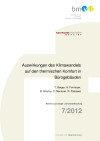
Schriftenreihe
07/2012
T. Berger et al.
Herausgeber: BMVIT
Deutsch, 165 Seiten
Downloads zur Publikation
Energy and Climate Change - World Energy Outlook Special Report

Herausgeber: International Energy Agency (IEA), ©OECD/IEA 2015 Energy and Climate Change World Energy Outlook Special Report, IEA Publishing
Englisch, 200 Seiten
IEA Bioenergy Task 39 Newsletter #41 (Dezember 2015): Deutschland
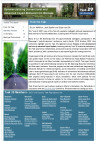
Jim McMillan, Jack Saddler, Susan van Dyk
Herausgeber: IEA Bioenergy Task 39
Englisch, 17 Seiten
Downloads zur Publikation
Energy Efficiency and Risk Management in Public Buildings (EnRiMa)
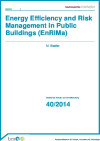
Schriftenreihe
40/2014
M. Stadler
Herausgeber: BMVIT
Deutsch, 42 Seiten
Downloads zur Publikation
Subprojekt 6a: Energieeffiziente Wohnquartiere durch Community Organizing
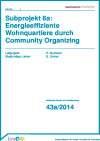
Leitprojekt: Stadtumbau Lehen
Schriftenreihe
43a/2014
R. Gutmann S. Untner
Herausgeber: BMVIT
Deutsch, 43 Seiten
Downloads zur Publikation
Konzept zur Einführung einer Energiespar-Contracting-Plattform für KMU
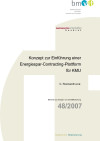
Schriftenreihe
48/2007
C. Rosmanith et al.
Herausgeber: BMVIT
Deutsch, 365 Seiten
Downloads zur Publikation
Artikel: Normung der Charakterisierung von Phasenübergangsmaterialien mittels dynamischer Differenzkalorimetern

St. Gschwander, T. Haussmann, G. Hagelstein, et al.
Herausgeber: Greenstock 13th International Conference on Energy Storage, Beijing
Englisch, 8 Seiten
Downloads zur Publikation
Bidirektionale Einbindung von Gebäuden mit Wärmeerzeugern in Wärmenetze (BiNe)
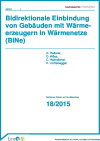
Schriftenreihe
18/2015
D. Reiterer
Herausgeber: BMVIT
Deutsch, 52 Seiten
Downloads zur Publikation
Reduktion fossiler Energieverbräuche durch Prozessoptimierung mit Hilfe der Simulationsbetrachtung
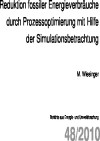
Schriftenreihe
48/2010
M. Wiesinger
Herausgeber: BMVIT
Deutsch, 30 Seiten
Downloads zur Publikation
Energiedienstleistung zur Steigerung der Energieeffizienz von Spritzgießmaschinen im Kunststoffbereich
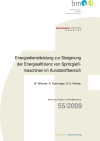
Schriftenreihe
55/2009
W. Wimmer, R. Pamminger, R. E. Winkler
Herausgeber: BMVIT
Deutsch, 110 Seiten
Downloads zur Publikation
Modularer Energiespeicher nach dem Sorptionsprinzip mit hoher Energiedichte (MODESTORE)
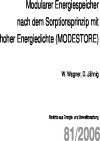
Schriftenreihe
81/2006
W. Wagner, D. Jähnig
Herausgeber: BMVIT
Deutsch, 53 Seiten
Downloads zur Publikation
Entwicklung eines "Lichtfängers" für tageslichttransparente, hochenergieeffiziente, mehrgeschoßige Gebäude
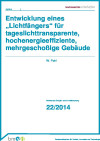
Schriftenreihe
22/2014
W. Pohl
Herausgeber: BMVIT
Deutsch, 43 Seiten
Downloads zur Publikation
Energieeffizienzsteigerung in der automatisierten Gebäudeklimatisierung durch wetterprognoseunterstützte Regelung (ProKlim)
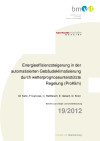
Schriftenreihe
19/2012
M. Kahn et al.
Herausgeber: BMVIT
Deutsch, 41 Seiten
Downloads zur Publikation
IEA EBC Working Group on Cities and Communities (WGCC)
The WGCC enables information and experience exchange, the identification of bottlenecks that lead to specific research questions and a direct communication with cities on their needs, to enable them to transform their energy systems. The working group is a joint initiative across several TCPs with in-depth participation of technical and non-technical (external) experts.
Future quarter 2.0 - Replicable, thermally and electrically grid-supportive conception of (positive energy) districts in a dense urban context
Development of a replicable concept for grid-supportive integration of innovative (positive energy) district with high on-site energy supply into the existing network infrastructure (electricity and district heating network).
IEA SHC Task 58/ECES Annex 33: Material and Component Development for Thermal Energy Storage
This Task/Annex addresses second generation materials for PCM and TCM energy storage and includes material development, characterization and testing under application conditions. In addition, the focus was on the interaction between material and storage component and on the expected storage performance of innovative materials.
Solar Heat Worldwide - Markets and Contribution to the Energy Supply 2005

The solar thermal collector capacity in operation worldwide equaled 107.8 GWth corresponding to 154 million square meters at the end of the year 2005. Of this, 90.7 GWth were accounted for by flat-plate and evacuated tube collectors and 16.2 GWth for unglazed plastic collectors. Air collector capacity was installed to an extent of 0.9 GWth.
Englisch
Process Heat Collectors State of the Art within Task 33/IV (Weiss/Rommel 2008)

Approximately 128 GWth, the equivalent of 183 million square meters, of solar thermal collectorswere installed by the year 2006 worldwide (Weiss et al., 2008). Until now, the widespread use of solarthermal applications has focused almost exclusively on swimming pools and residential domestichot water preparation and space heating.
Englisch
Decarbonization of Cities and Communities (Cities TCP)
The Cities TCP is a joint international effort that aims to accelerate the decarbonization in cities by providing a communication platform for relevant expertise of all IEA bodies to the local scale including cities, financing institutions, utilities, service providers and building constructors. Vice-versa, the platform generates evidence-based research questions of cities needs for IEA TCPs.
EdeN - Efficient decentralized sustainable food production
In the EdeN project, a decentralized vertical farming concept is extended to meet circular economy requirements. The combination of vertical farming with closed energy-, resource- and distribution-loops is a possible disruptive concept in food production. The developed concepts will be accessible and transferable to other food producers, and its limitations will be pointed out.
